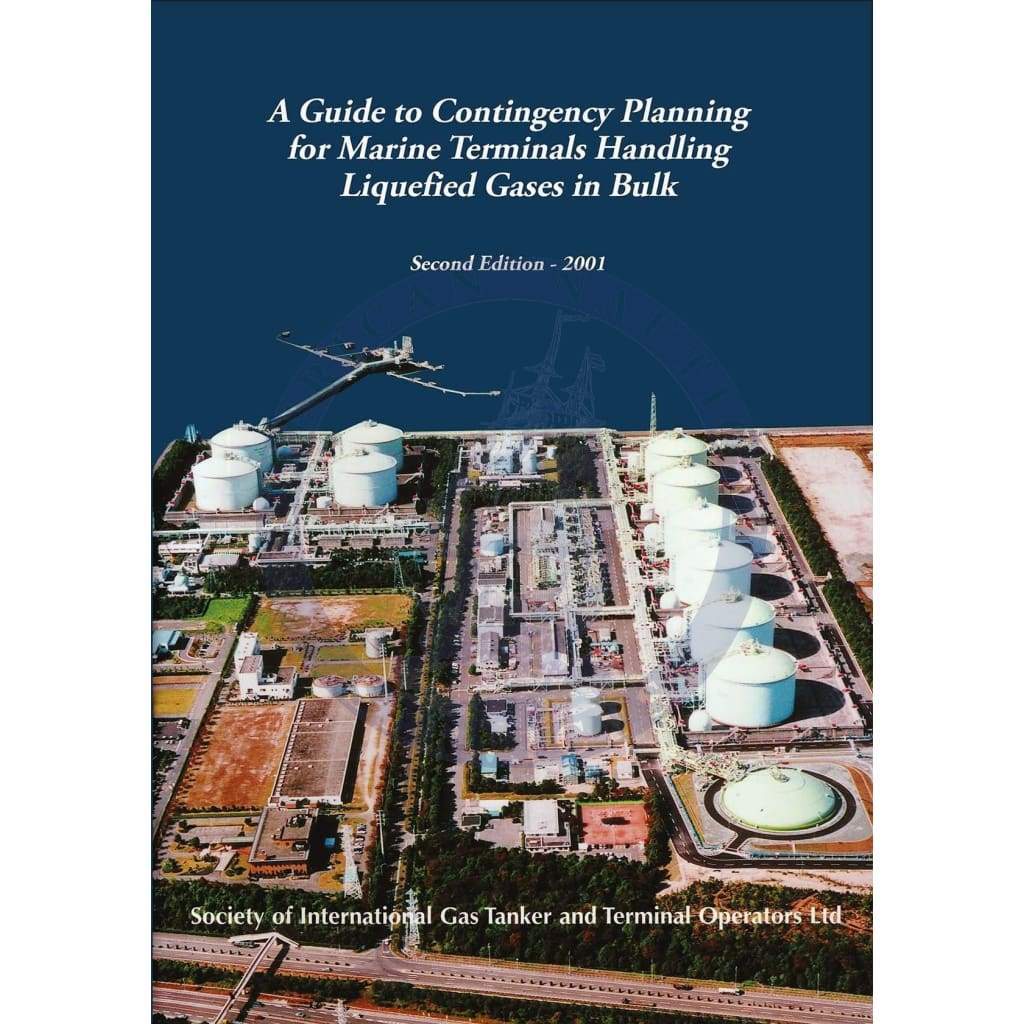Overview
This book specifically deals with the safe storage and transfer of liquefied gases at marine terminals. It can also be adapted to be used at a terminal that handles any hazardous substance in bulk. It provides terminal management with guidance on contingency planning, including identifying and controlling potential hazards, controlling incidents and the review periods.
The 1st Edition of this guide was originally prepared in 1989 by a joint industry working group made up of members of OCIMF, ICS and SIGTTO. The document has been revised and extended to include 'Guidelines for Preparing and Co-ordinating a Major Ship/Shore Emergency Exercise' and was published by SIGTTO in 1994. This was the third guide in a series. The first was 'Contingency Planning for the Gas Carrier at Sea and in Port Approaches', first published in 1983 and updated in 1998. The second in the series was 'Contingency Planning for the Gas Carrier Alongside and Within Port Limits' published in 1987 and updated in 1998.
A joint action between the IMO and the Environment Office of the United Nations Environment Programme (UNEP IE) in 1996 adapted an existing process, 'Awareness and Preparedness for Emergencies at Local Level (APELL)' to port areas. The APELL process was developed as a response to various industrial accidents that have had a detrimental effect on the environment.
The main APELL recommendations for port areas that are included in this publication are the Seveso II Directive (Control of Major Accident Hazard Regulations (COMAH) in the UK) which is applicable to all sites where dangerous substances are located. On and off site emergency plans must be available at sites within the EU where this directive is applicable.
This guide is not a code of practice or intended to cover all types of major industrial accident. The local and national legislation should always be considered when using the guide.
Content
Foreword
1. Prevention of Major Accidents
Safety management systems
Identification of potential hazards
Control of potential hazards
Safety auditing
2. Emergency Planning
On-site emergency plan
Emergency response manuals
Emergency services and off-site emergency plans
Interaction and liaison between emergency services
Mutual aid schemes
Public relations
Periodic reviews
3. Incident Control
Activation of the marine terminal emergency plan
Establishing incident control
Role of key personnel during an incident
Communications
Termination of incident
4. Incident Follow-Up
Incident investigation
Reporting and lessons learned
Re-commissioning of plant after a major incident
5. The Organisation of a Major Emergency Exercise
Creating an exercise culture
Exercise constraints
Defining exerciseobjectives
Exercise planning
Starting an exercise
Exercise levels
Appendices
Illustration of Typical Emergency Plan Contents List
International Regulations and Guidelines
Apell:
General
Objectives
Philosophy and general approach
APELL for port areas
Saveso Directives:
General
Details
Title: A Guide to Contingency Planning for Marine Terminals Handling Liquefied Gases in Bulk, 2nd Edition
Edition: Second
Number of Pages: 42
Product Code: 4400W018
ISBN: ISBN 13: 978-1-85609-215-9 (9781856092159), ISBN 10: 1-85609-215-1 (1856092151)
Published Date: October 2001
Binding Format: Paperback
Book Height: 230 mm
Book Width: 210 mm
Book Spine: 5 mm
Weight: 0.30 kg
Author: SIGTTO








